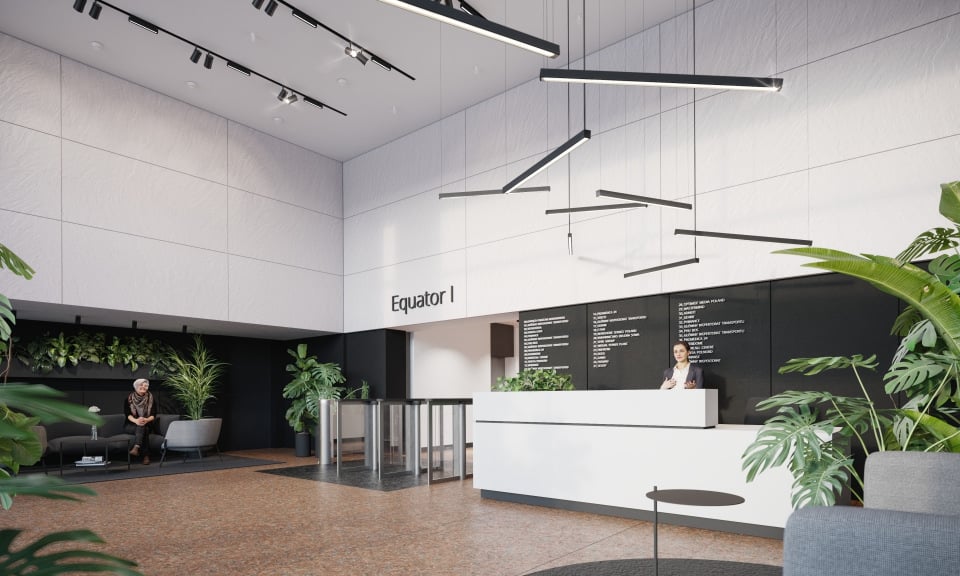According to the Walter Herz report ‘26 Office Trends for 2026’, developed in collaboration with partners, the office of the future is redefining the role of the workplace. Office space is gaining a new function — it is becoming an experience and a strategic tool for organisational growth.
As an element of a company’s identity, it supports organisational culture, employee well-being, and competitive advantage. At the heart of these changes are people, technology, and sustainability. The evolution process is driven by three key trends: the transformation of workspace, automation and technological integration, and the humanisation of work in the era of artificial intelligence.
The HR and Administration departments, in turn, are taking on the role of strategic change leaders, planning their moves like a chess queen. Their mission is to coordinate the implementation of innovation and ESG initiatives, manage organisational culture and employee experience, and build a cohesive and employee-friendly work ecosystem.
“Today, the office is no longer just an operational cost, but a strategic investment in people, culture, and corporate reputation. The workspace is becoming a tool for building engagement, innovation, and organisational resilience. Companies that view the workplace in this way gain a competitive edge in the market. In the report ‘26 Office Trends for 2026’, we highlight the direction in which the office sector is heading, as well as present specific solutions for Administration and HR departments regarding the implementation of changes in office space,” says Magdalena Zagrodnik, Partner / Board Member at Walter Herz.
Space – Office as an Experience and a Symbol of the Brand
“Offices of the future are living ecosystems where space supports team development, creativity, and relationships. The workplace is becoming a carrier of organisational identity and one of the most important tools of employer branding,” says Michał Orłowski, Director / Head of Leasing and Asset Management at Karimpol Polska.
Modern offices are flexible, tailored to the hybrid work model, and integrated with urban infrastructure. The growing flexible office segment enables companies to scale their operations quickly, test new markets, and respond efficiently to business changes. Flex spaces are becoming a market standard, offering full service, lower entry barriers, and shorter commitments.
Comfort, ergonomics, and well-being are gaining importance. The Biophilic Design 2.0 trend brings nature into the workplace. Greenery, natural light, and organic materials enhance focus, reduce stress, and strengthen the overall sense of well-being. Ergonomics now extends to the entire work environment — from height-adjustable desks to movement zones and inclusive solutions designed for neurodiverse individuals.
At the same time, sustainability (ESG) is becoming a required standard. Office buildings are increasingly equipped with photovoltaic panels, heat recovery systems, smart energy management, and infrastructure supporting electromobility. Energy resilience is not only about environmental responsibility — it also represents a real competitive advantage, influencing both operational costs and a company’s brand image.
Technology – Digitalisation and Smart Management
The office of 2026 is a digital organism, where technology operates seamlessly in the background to ensure comfort, efficiency, and security. AI-, IoT-, and BMS-based systems integrate the management of lighting, climate, energy, and access control. Real-time data becomes the foundation for predictive management and cost optimisation. Meanwhile, administrative departments are evolving into data analytics centres rather than purely operational units.
A new generation of communication technologies is transforming the way teams collaborate and organise meetings. Smart meeting rooms equipped with auto-framing, voice tracking, and noise reduction features make hybrid communication seamless and natural. The BYOM (Bring Your Own Meeting) model is becoming the new standard, allowing users to connect from any device or platform with a single click.
The future of office visualisation lies in interactive glass walls and modern LED screens integrated into the workspace, as well as glass partitions that function as screens or interactive panels. Technology permeates architecture, making spaces more dynamic and aesthetically engaging.
Digitalisation also enhances building security. Biometric systems, AI-powered monitoring, and cybersecurity solutions enable effective data protection and operational continuity. “Multidimensional security – physical, sanitary, and digital – is becoming one of the most important aspects of property management,” says Joanna Piechota-Flinik from Grupa Impel.
The Role of AI
At the heart of the office in 2026 remain people and interpersonal relationships. Artificial intelligence does not replace people but enhances their potential by automating routine tasks, allowing employees to focus on creativity and development.
In the offices of the future, AI will also support career personalisation. Systems analyse employees’ skills, needs, and development pace to build individual competency paths. Continuous, data-driven development support is provided instead of annual evaluations.
In the upcoming period, the role of leaders will also evolve. From supervisors, they are becoming mentors and facilitators for their teams, fostering a culture of empathy, autonomy, and trust. Organisations are transitioning to a skill-based workforce model, where competencies matter more than job titles. The growing importance of wellbeing and purpose is driving companies to invest in mental fitness programs, digital detox initiatives, and resilience coaching. Well-being is becoming a measurable indicator of performance.
The office of 2026 is a space that not only supports productivity but also strengthens the company’s identity and organisational resilience, becoming a key strategic tool.







